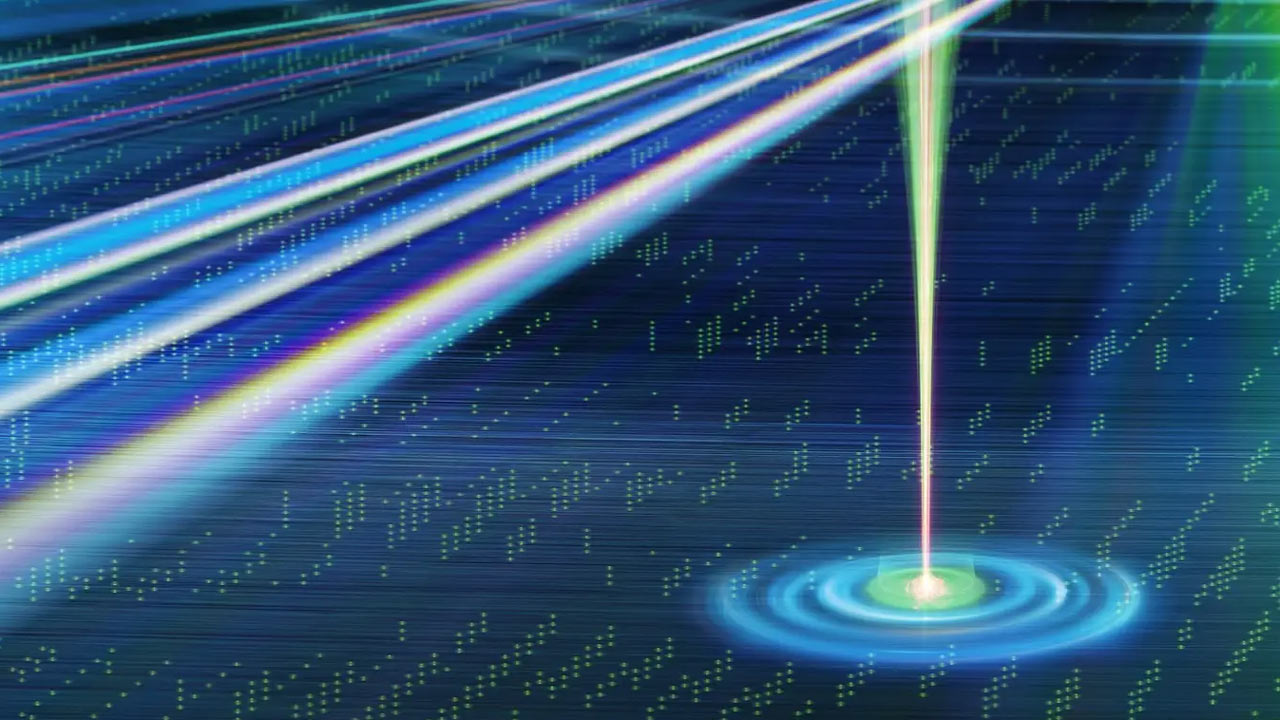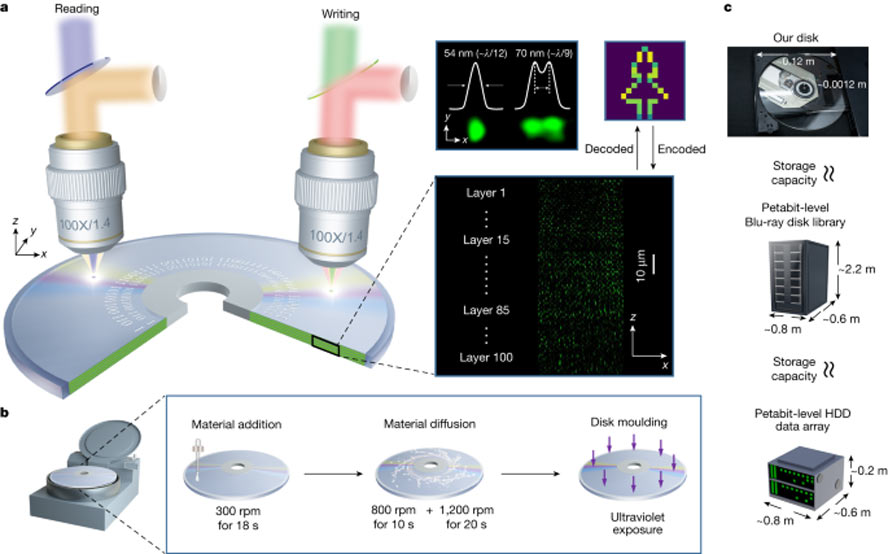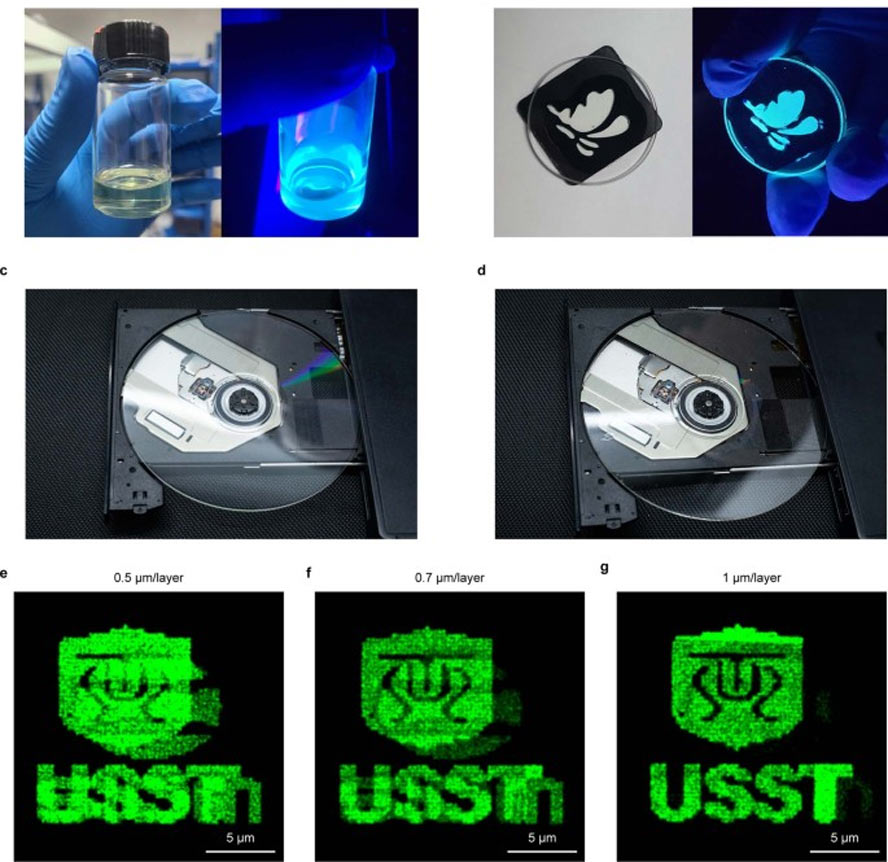
Researchers in China have developed a super-high capacity optical disk format that is claimed to hold up to 125TB of data, reports Hong Kong’s SCMP. The new disks are described as outwardly similar to previous Optical Data Storage (ODS) formats like Blu-ray disks. However, thanks to the application of nanotechnology and a 3D stacking architecture, density is boosted by about 10,000 times.
Digital storage requirements are ballooning as the throng of connected organizations and humans wish to save and process increasing amounts of rich data. Therefore, a lot of research is going into delivering storage that pushes the storage envelope in one or more dimensions, aiming to advance speeds, capacity, durability – or a compelling mix of these qualities.
Probably the most urgent digital data crunch to address in one of capacity, and that is the critical target of the new ODS research by scientists from the University of Shanghai for Science and Technology, Peking University, and the Shanghai Institute of Optics and Fine Mechanics, and Key Laboratory of Photochemistry in their paper ‘A 3D nanoscale optical disk memory with petabit capacity.’
The research paper claims to address the data capacity crunch by offering “a promising solution for cost-effective long-term archival data storage.” This solution necessitated several innovations. Firstly, the 3D stacking of hundreds of data layers extended the optical disk data density. Secondly, a photoresist film doped with aggregation-induced emission dye was used for excellent data density on each incredibly thin layer of the disk. Lastly, data reading and writing technologies needed to be tailored for the complex new medium.
For their petabit-barrier busting ODS, the Chinese scientists used a double-sided 120mm disk with 100 layers on either side. However, the disks aren’t any thicker than an optical disk you might use today in your home theater or console gaming setup, as the layers are so thin and fit only one micrometer apart. We don’t have a lot of information about the read / write technology except that the storage mechanism comes from the photoresist film being optically stimulated by femtosecond laser beams with recording spots measured at a super-resolution scale.


It is hoped the new 1.6 petabit (125TB) disks will help prevent any impending data crunch on several levels. “It will thus become possible to build an exabit-level data center inside a room instead of a stadium-sized space by stacking 1,000 petabit-level nanoscale disks together,” said the researchers. Moreover, the new optical disks are claimed to be “highly stable so there are no special storage requirements.” The researchers tout an expected shelf life of 50 to 100 years, which means both data environment control and migration costs could be reduced.
The research team continues to work on this new ODS - improving data transfer speeds, lowering write energy, and making disk hardware more affordable for commercialization.







